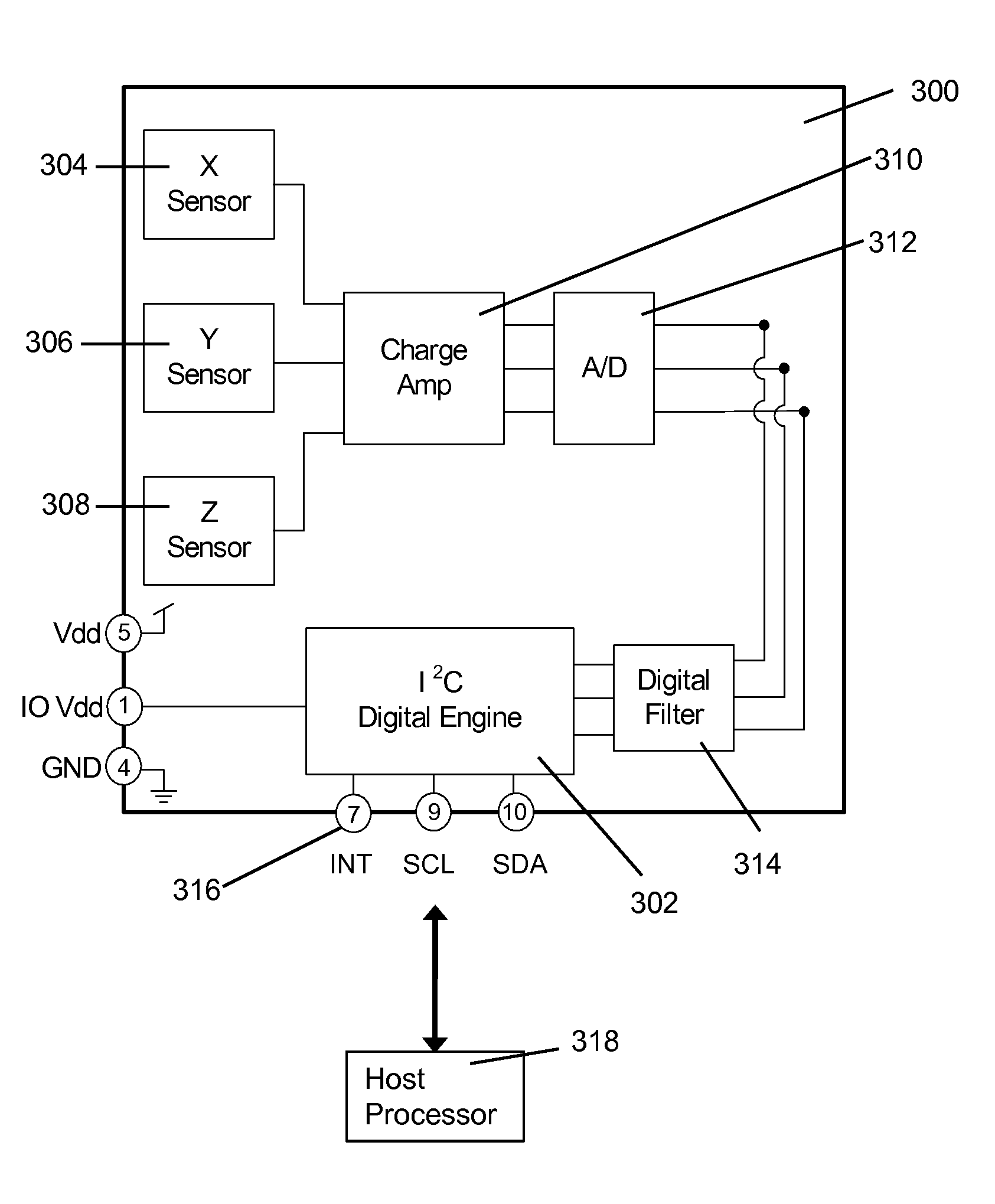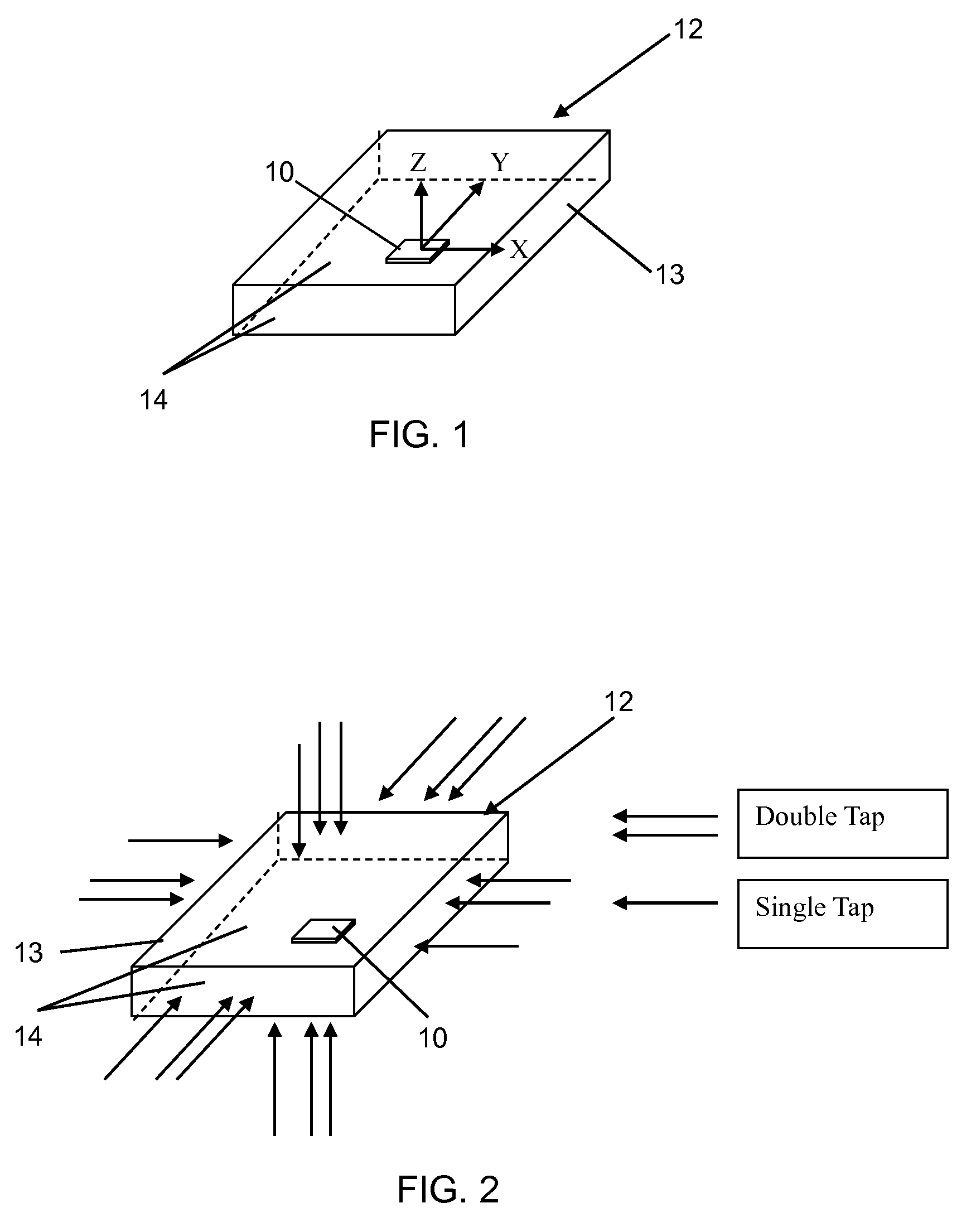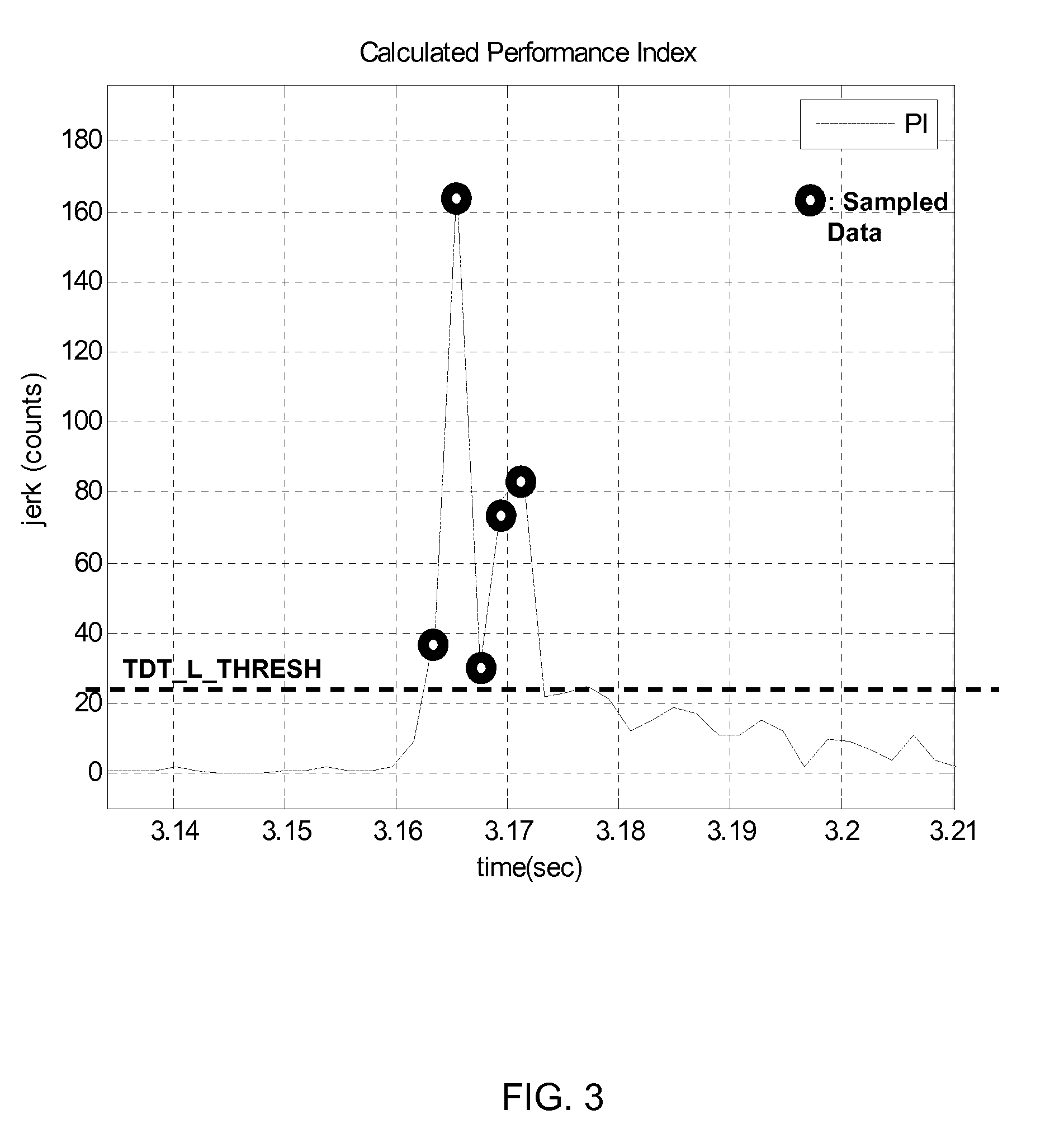Directional tap detection algorithm using an accelerometer
a detection algorithm and accelerometer technology, applied in instruments, portable computers, instruments, etc., can solve the problems of limiting the mobile device is getting smaller and smaller for portability, and the size reduction limit the space available for input devices
- Summary
- Abstract
- Description
- Claims
- Application Information
AI Technical Summary
Benefits of technology
Problems solved by technology
Method used
Image
Examples
Embodiment Construction
[0028]A more detailed description of a preferred embodiment of the present invention will now be presented. Initially, the process for identifying a tap is described. A single tap is a blow to a particular device once with a part of the human body or a stylus. A double tap is formed by two single taps in quick succession.
[0029]As illustrated in FIG. 1, a 3-axis (X, Y, Z) MEMS type accelerometer 10 is preferably mounted inside a device 12 to be controlled such that when the housing 13 of the device 12 is tapped on any of its six sides or faces 14, the shock is translated to accelerometer 10 properly. The device 12 can be any type of electronic device to be controlled which requires commands to be input thereto, but the invention is particularly suited for use with small mobile devices such as cell phones, MP3 players, etc. where the provision of command buttons is inherently limited by the size of the device.
[0030]Since the device 12 can be tapped on any of its six sides 14, the opti...
PUM
 Login to View More
Login to View More Abstract
Description
Claims
Application Information
 Login to View More
Login to View More - R&D
- Intellectual Property
- Life Sciences
- Materials
- Tech Scout
- Unparalleled Data Quality
- Higher Quality Content
- 60% Fewer Hallucinations
Browse by: Latest US Patents, China's latest patents, Technical Efficacy Thesaurus, Application Domain, Technology Topic, Popular Technical Reports.
© 2025 PatSnap. All rights reserved.Legal|Privacy policy|Modern Slavery Act Transparency Statement|Sitemap|About US| Contact US: help@patsnap.com



